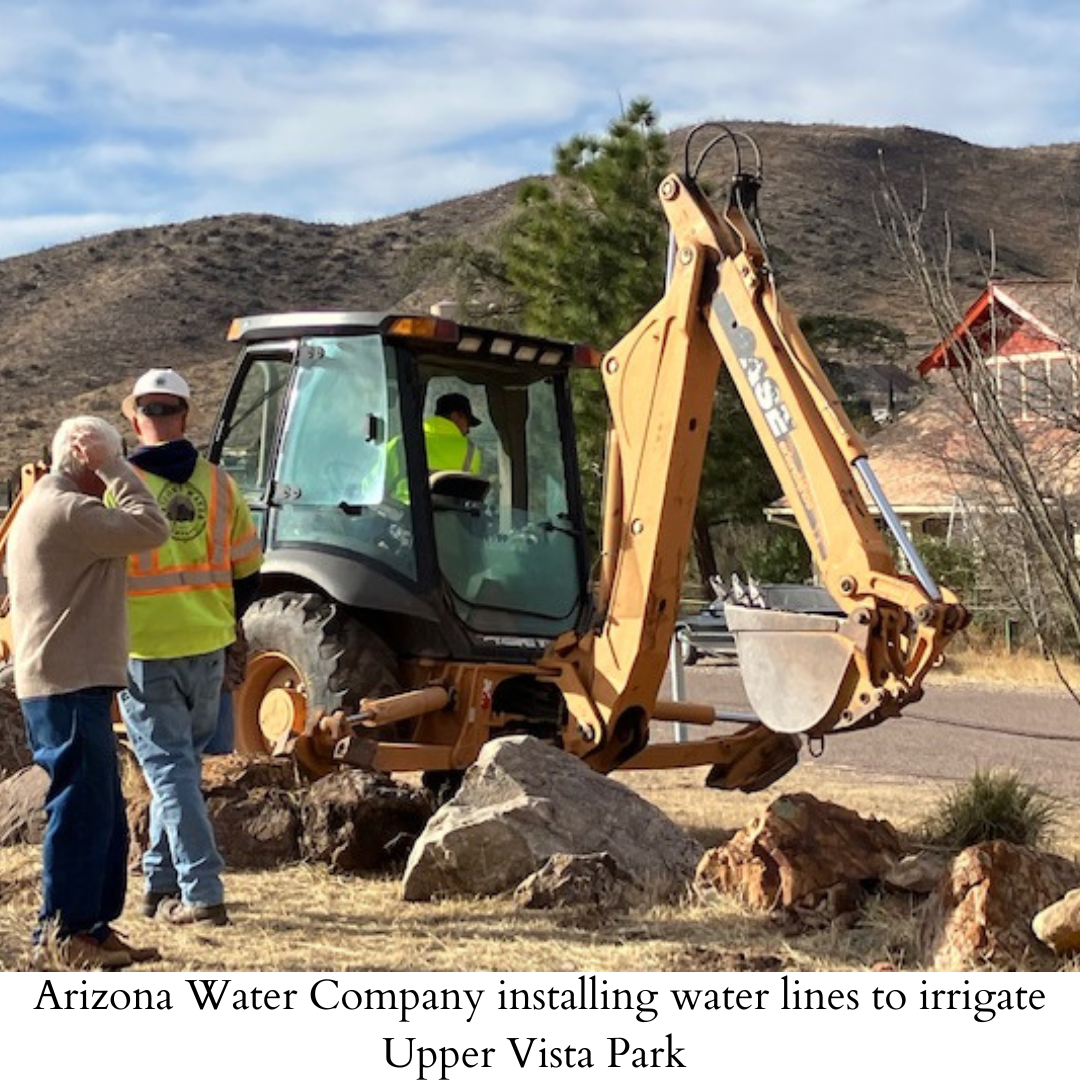
Pygmy blue butterfly (Brephidium exile) in Upper Vista Park (photo by Doug Danforth)
Author: Keith Ashley, AWF Development Director
In the four weeks between my April and May visits to Project Wildlife, Bisbee, something amazing happened – thousands of colorful, native blossoms unfurled their bounty of nectar and pollen in the Upper Vista Park and in a patchwork of smaller gardens all around town. If I were an Arizona pollinator – say an owlet moth or a pygmy blue butterfly – I’m pretty sure this would be like a whole fleet of food trucks and a hundred new bar-and-grills throwing open their doors and inviting me in for a spring feast.

Even more impressive: In the eight months since the small group of volunteers behind Project Wildlife, Bisbee set their sights on certifying their town as a National Wildlife Federation (NWF) Community Wildlife Habitat, the participation and support of neighbors, local government, civic clubs, partnering nonprofits, and others has been enormous and inspiring.
The nearly two-acre Upper Vista Park was placed in the hands of Project Wildlife by the City of Bisbee to refurbish with native plants. 350 feet of irrigation lines were donated and installed by the Arizona Water Company; the land was contoured and fencing was put up by the City of Bisbee to discourage javelina; several generous grants and sponsorships were awarded, allowing for the installation of 360 native plants and two water features.
The advisory group of local citizens guiding the project grew to a robust cadre of 16. The handful of core volunteers invested more sweat equity (shoveling, planting, tabling, educating, planning, writing, communicating, fundraising). Volunteer Doug Danforth carried a LOT of fallen rocks into the park for landscaping. Trevor Lauber of the UA Cochise Cooperative Extension Water Wise Program has supported efforts with Water Wise literature, public outreach, and his knowledge of local bird life. Meanwhile, the two lead administrator-gardeners, Jane Gaffer and Carmen Faucon, may or may not have asked themselves: What in the world have we gotten ourselves into?
A wise person once described “collateral good” to me as: do a good thing, and more good things ripple from it, and even more good things ripple out from those. Project Wildlife, Bisbee is a great example of just such collateral good. While there is still plenty of planning and fundraising to be done, the group has inspired 95 community members to certify their gardens and the Upper Vista Park is well on its way to becoming an outdoor living classroom and demonstration garden eventually to be completed with interpretive signage, water harvesting, and a variety of other special features.
%20in%20Upper%20Vista%20Park.png)
Given the severity of the pollinator crisis around the globe, community-wide efforts like this one not only stand to support wildlife through an immediate increase in native plants providing nectar, pollen, and larval food sources specifically attuned to native pollinator needs, but they also help to educate the public at large about how they too can get involved. While Bisbee’s population is that of a small town, just approaching 5,000, Cochise County boasts 125,000 residents and Bisbee estimates 300,000 annual visitors. Soon the main roads into town will share signage indicating that this is a National Wildlife Federation Wildlife Habitat Community and over time the Upper Vista Park will be a living testament as to how we can intentionally garden with local pollinators and other wildlife top of mind.
This year the Bisbee Bloomers Annual Garden Tour will feature gardens that are all certified wildlife habitats. Early ticket sales will be available at Eventbrite, with tickets available in person the day of the tour in Grassy Park and Vista Park’s Bisbee Saturday Market. There will be live music in many of the gardens. You can follow the Bisbee Bloomers on Facebook for updates.
June is National Pollinators Month and Project Wildlife, Bisbee has found a fantastic way to celebrate!
.png)